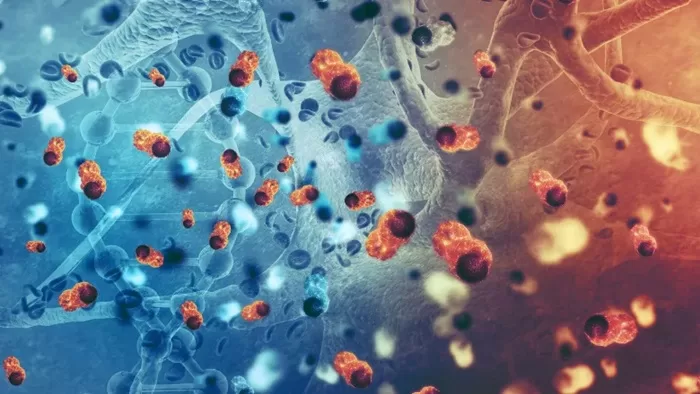Health
From Relief to Concern: Unveiling the Continuing Cancer Risk After Referral

- Patients in England referred to urgent suspected cancer pathways without a cancer diagnosis face a higher risk of subsequent cancer within 1-5 years, potentially attributed to lifestyle factors.
- Proactive support and behavior change interventions may help reduce the risk of cancer in this patient group, according to a study published in Lancet Oncology.
Patients who were referred to urgent suspected cancer pathways, but were found not to have cancer at that time, have a higher risk of subsequent cancer in the 1-5 years following the ‘all clear’ than those who haven’t been through the referral pathways.
The study, published in Lancet Oncology is the first to examine the risk of cancer in patients in England who entered the urgent suspected cancer pathway but were found not to have cancer at that time. These patients were found have a higher-than-expected risk of subsequent cancer in the 1-5 years after the initial ‘all clear’.
In England, the urgent suspected cancer referral pathway is the most common route to diagnosis. Of the 3 million patients who are referred for urgent cancer assessments in England each year, 7% are found to have cancer. This leaves a large group of patients who go through these pathways but do not have cancer at the time – a group that is currently understudied and who may be in need of support.
To determine the future cancer risk for this large group of patients, researchers at Queen Mary, King’s, the University of Oxford and the National Disease Registration Service (NHS England), looked at the health data of over a million NHS patients in England who were found not to have cancer following an urgent referral for suspected cancer. They found that between 1 and 5 years after the initial referral, 63,112 cases of cancers were diagnosed. The risk of any cancer in this group was found to be 4.5% over the 5 years, which is not considered high, but is higher than people of similar age and gender in the general population.
The results suggest that the higher-than-expected cancer risk is not due to cancers being missed in the initial referral. Rather, the subsequent cancers are likely caused by high risk factors – such as poor diet, smoking, or alcohol consumption. The findings suggest that there’s an opportunity to provide additional support to patients without a cancer diagnosis on the referral pathway. Proactive monitoring or targeted interventions to support behaviour change – such as cancer awareness or risk reduction initiatives – could be beneficial in reducing the risk of cancer.
Suzanne Scott, lead author and Professor of Health Psychology and Early Cancer Diagnosis at Queen Mary, said: “Going through urgent cancer assessments can be a very anxious time for patients. Thankfully most will not be diagnosed with cancer. In this study we found that having cancer ruled out doesn’t lessen the future risk of cancer. This means patients and GPs should remain vigilant when experiencing new or ongoing symptoms. The timing of urgent suspected cancer referrals could be an opportunity to raise cancer awareness, and consider ways to reduce risk of cancer and other serious diseases, by making a positive change in health behaviour.”
“Urgent suspected cancer referrals are a vital tool in improving earlier cancer diagnosis. Over the past decade referrals have more than doubled, to nearly 3 million annually. While only 7 in 100 people receive a cancer diagnosis, we must support the 93 who don’t have cancer at that point in time. This study shows for the first time that whilst the risk level is not high, it is higher than we might expect, especially for patients on certain pathways, for example suspected lung cancer. This has clinical implications, for example higher risk groups may benefit from having lower thresholds to re-assess symptoms and future testing and referral.”
Author Thomas Round, NHS GP and researcher in early cancer detection at King’s
The study included health data on NHS patients in England on referrals and diagnoses for the eight main urgent suspected cancer referral pathways: breast, gynaecological, head and neck, lower and upper gastrointestinal, lung, skin, and urological.
Researchers also looked at which types of cancers occur after different referral pathways. The increased risk of any subsequent cancer in the 1-5 years after referral was lowest following suspected gastrointestinal cancer referrals. Highest risks were found following suspected urological or lung cancer referrals. For risks of the same cancer as suspected at initial referral, the highest were for the head and neck, and lung pathways.
Naser Turabi, Director of Evidence and Implementation at Cancer Research UK, said: “One of the possible reasons for the pattern found in this research is that people who are urgently referred could have a higher risk of developing cancer in general. For example, they might smoke, be overweight or obese, or have a family history of cancer. They are then more likely to develop cancer in the following years, despite not having cancer after their initial GP referral. More research will be needed to know for sure though. It’s important to contact your GP if you notice anything that’s not normal for you. Even if you’ve been checked out in the past, if something is new, isn’t going away, or is getting worse, go back to your GP.”
Source: King’s College London






















































